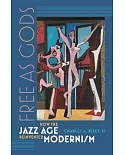Thomas Eakins and the Cultures of Modernity is the first book to situate Philadelphia's greatest realist painter in relation to the historical discourse of cultural difference. Alan C.
Braddock reveals that modern anthropological perceptions of "culture," attributed to Eakins by many art historians, did not become current until after the artist's death, in 1916. Braddock
demonstrates that Eakins's realistic portrayals of Spanish street performers, African Americans, and southern European immigrants embodied a premodern worldview. Yet by exploring Eakins's
struggle to visualize diversity amid the dislocating forces of his day--mass immigration, orientalism, tourism, commercial publishing, and the international circulation of ethnographic
objects--this book illuminates American art on the threshold of the twentieth-century "culture concept" promulgated by Franz Boas and other modern anthropologists.





















